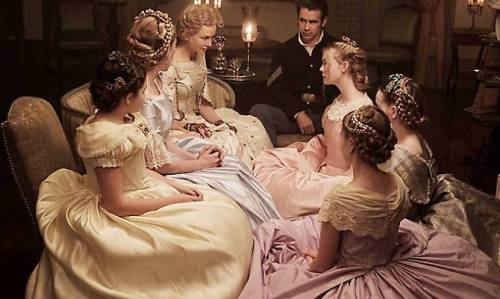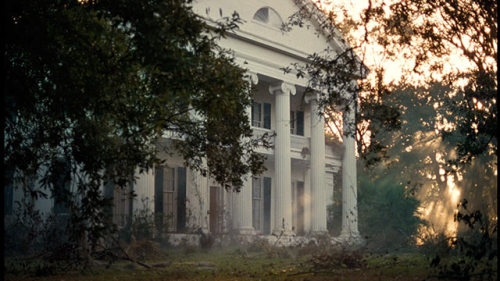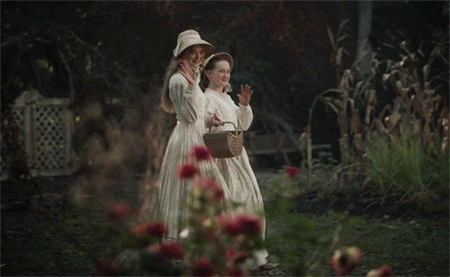"SPIDER-MAN" (2002) Review
I have been a major fan of the Marvel Comics character, Spider-Man, for a long time. When I was a kid, I used to read "The Amazing Spider-Man" comic strip from my local newspaper on a daily basis. I was also a regular viewer of the reruns from the 1967-70 animated series "SPIDER-MAN" and the 1978-79 television series, "THE AMAZING SPIDER-MAN", which starred Nicholas Hammond. So when Columbia Pictures released a movie version of the comic book web crawler twenty years ago, I was a happy camper.
Ironically, I have no memories of any particular episode from either the animated series or the live-action series. All I know is that I used to watch both. But there is no way I could ever forget director Sam Rami's 2002 film adaptation, which starred Tobey Maguire as Peter Parker aka Spider-Man. How could I? I own a DVD copy of the movie.
"SPIDER-MAN" is basically Rami and screenwriter David Koepp's take on the web slinger's origins. The movie begins with teenager Peter Parker living with his Uncle Ben and Aunt May in Forest Hills, a suburb in Queens, New York. Peter is in love with next door neighbor Mary Jane Watson and is best friends with Harry Osborn, the son of millionaire/scientist and Oscorp CEO, Dr. Norman Osborn; who seems to regard Peter more as a son than Harry. Peter attends a field trip with Mary Jane, Harry and other fellow students to a genetics lab. when he is bitten by a genetically engineered spider. He wakes up the following morning with perfect vision, fast reflexes, superhuman strength and the ability to emit web strings. His school fight with Mary Jane's bullying boyfriend, Flash Thompson, attracts Uncle Ben's attention, who has become concerned with Peter's recently distant behavior.
Meanwhile, Norman Osborn's company is in danger of losing its bid for a contract with the U.S. Army for weapons. Osborn tests his company's new performance-enhancing drug and becomes stronger. He also acquires a maniacal alter ego and murders his assistant. And Peter decides to use his new abilities to raise money. He enters a wrestling match to win $300 dollars. But the promoter scams him out of his full reward and Peter retaliates by refusing to help stop a thief from stealing the box office returns. The same thief ends up killing Uncle Ben during a carjacking. When Peter realizes that the thief and his uncle's killer are one and the same, he becomes guilt-ridden and decides to use his powers to become a masked vigilante following graduation from high school. In time, Peter aka Spider-Man and Osborn aka the Green Goblin battle it out for the safety of New York.
As much as I enjoyed "SPIDER-MAN", I must admit that it had its flaws. All of those flaws centered around Koepp's screenplay. One, I thought the story was a bit episodic, especially the first half that revealed both Spider-Man and the Green Goblin's origins. In fact, the movie could be easily divided into two halves - from the beginning to Peter's graduation from high school, and his activities and battles with the Green Goblin. Another major problem that stemmed from Koepp's screenplay was the dialogue. "SPIDER-MAN" turned out to be one of the two top movies that were released during the summer of 2002. The other was "STAR WARS: EPISODE II - ATTACK OF THE CLONES". While fans and critics criticized some of the dialogue in the latter film, they easily overlooked the cheesy dialogue that tainted "SPIDER-MAN", especially the smart-ass comments that poured from Spider-Man's mouth. And I found the Green Goblin's early attempt to convince Spider-Man to become an ally a bit contrived.
Fortunately, "SPIDER-MAN" possessed virtues that outnumbered its flaws. One, the movie was fortunate to have Danny Elfman as its composer. I thought he did a top-notch job that contributed greatly to not only the movie's, but the entire trilogy's atmosphere. Neil Spisak and his team did a superb job with the movie's production designs that gave it a colorful, comic-book style without going over-the-top. I was especially impressed by Spisak's designs for the genetic lab sequence and the Oscorp-sponsored fair sequence that featured the murders of the Oscorp directors. Spisak's production work was ably assisted by Don Burgess' photography. In fact, I would say that Burgess' work more than Spisak's gave the movie its colorful comic-book style.
Although I found Koepp's screenplay a bit episodic, I must admit that it featured some very exciting scenes that I will never forget. My favorites include Peter's wrestling match with Bonesaw McGraw, the murder of the Oscorp directors, and Spider-Man's rescue of Mary Jane from a bunch of thugs. But the two scenes that truly stood out for me and struck me as well directed by Rami were the Thanksgiving dinner at Peter and Harry's Manhattan apartment; and the final showdown between Spider-Man and the Green Goblin. The Thanksgiving dinner not only led to Osborn's discovery of Peter's identity as Spider-Man, it provided a deliciously subtle interaction between the millionaire and Aunt May, due to wonderful performances by Willem Dafoe and Rosemary Harris. Spider-Man and the Green Goblin's final confrontation led to a nail-biting moment in which the latter forced Spider-Man to choose between saving Mary Jane and the underage passengers of a Roosevelt Island Tramway car. The sequence also led to a brutal fight between the adversaries and one of the best lines ever to be uttered by a Marvel villain:
"This is why only fools are heroes - because you never know when some lunatic will come along with a sadistic choice."
I will also add that when I criticized Koepp's screenplay for being episodic, I really meant that it seemed to be somewhat divided between two complete stories. Once Peter assumed the role of Spider-Man, became a photographer for The Daily Bugle and engaged in his conflict with the Green Goblin, the movie picked up to become a force of nature.
Tobey Maguire nearly failed to become Peter Parker aka Spider-Man. Although Rami wanted him for the role, Columbia Pictures executives were hesitant to cast someone who did not seem to fit the ranks of "adrenaline-pumping, tail-kicking titans". Apparently, these guys never read any of the comic books. Without his Spider-Man outfit, Peter Parker was supposed to be a quiet, nerdy science student with a slight built. Not only did Maguire physically and emotionally fulfilled Peter's character with perfection, he also worked with a physical trainer to improve his physique for the Spider-Man scenes. His performances as Spider-Man really took me by surprise. I did not realize that he would be so effective as both an action hero and quiet nerd. And I like being surprised.
Koepp's portrayal of the Mary Jane Watson character differed from the comic books in many ways. One, Peter and Mary Jane never met until both were students at Empire State University in the comic books. Two, the comic book Mary Jane was a little more extroverted than the cinematic Mary Jane portrayed by Kirsten Dunst. And she seemed quite taken by Spider-Man, after he saved her during the Goblin's murder of the Oscorp directors. Despite these changes, Dunst gave an excellent performance with the character she was given and she had a very strong screen chemistry with Maguire, which culminated in the famous screen kiss that is still considered iconic. Also, Dunst's Mary Jane proved that friendship was a more valuable component than mere muscles, when she revealed at the end that Peter meant more to her than Spider-Man. Dunst also had a strong screen chemistry with actor James Franco, who gave an excellent performance as the insecure Harry Osborn, who longed for his father's attention and especially respect. Come to think of it, Franco also had strong chemistry with both Maguire and Willem Dafoe. Cliff Robertson was wonderful as Peter's Uncle Ben. He and Maguire were excellent in the Peter/Uncle Ben scenes that would end up reverberating in the next two movies. And Rosemary Harris was a delight as the warm-hearted Aunt May, especially in the Thanksgiving dinner scene and the hospital scene that featured her own heartwarming conversation with Peter. Despite being forced to utter some very cheesy dialogue, Willem Dafoe overcame this defect and gave a truly scary and fascinating performance as Norman Osborn aka the Green Goblin. Some of his best moments featured those scenes in which Osborn had conversations with his alter ego - the Goblin. No wonder his Green Goblin is still considered to be the best on-screen Spider-Man villain.
Stan Lee was ecstatic over J.K. Simmons' portrayal of The Daily Bugle editor-in-chief, J. Jonah Jameson. And I can see why. In some ways, it is a rather one-dimensional performance. Then again, I have always remembered Jameson as a one-dimensional character. But Simmons breathed life and humor into the role and ended up giving one of the best performances in the movie. It is too bad that the Betty Brant character was regulated as a supporting one. In the comic books, she was Peter's high school girlfriend and his first love. In "SPIDER-MAN", she is Jameson's friendly secretary, who was always coming to Peter's aid. Yet, Elizabeth Banks effused a great deal of warmth into the character that made her very likeable. I can also say the same about Bill Nunn's performance as editor Joseph "Robbie" Robertson. Bruce Campbell and Octavia Spencer provided some humorous moments as a wrestling announcer and a clerk who signs Peter up for a match.
Unlike many other fans of the "SPIDER-MAN" movie franchise, I never considered the 2002 movie to be the second best of those directed by Sam Rami. David Koepp's screenplay seemed a bit episodic to me. And it was filled with too many cheesy dialogue. But the screenplay did provide a strong and action-packed second half for the story. And I am one who cannot deny that Rami's direction, along with the production crew and an excellent cast led by Tobey Maguire overcame the screenplay's flaws and provided a first-rate comic book movie that I will never forget.















































